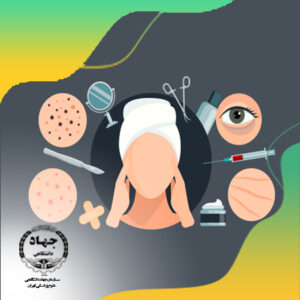Cookies collect information about your preferences and your devices and are used to make the site work as you expect it to, to understand how you interact with the site, and to show advertisements that are targeted to your interests. ThoughtCo. The caterpillars may be contacted when they drop from the host trees or when they wander from the trees in search of a place to spin their cocoons. Orgyia detrita: Coastal Plain from Long Island to Florida and Gulf States west to Texas (Ferguson 1978, Wagner 2005, Orgyia detrita entry at North American Moth Photographers Group web site). Adult moths mate and lay eggs in the summer months and caterpillars hatch from those eggs in the late summer and early fall. Male whitemarked tussock moth (Orgyia leucostigma). Mature larvae . The females cover their egg masses with hairs from their bodies. The milkweed tussock moth, also known as the milkweed tiger moth, prefers milkweeds and dogbanes as larval food sources. Now that they have been demoted to a subfamily within the newly created family Erebidae, they are thought of as the "true" tussock moths. You must recognize that species diversity is necessary for the health of an ecosystem. I also read they are beneficial for eating aphids, etc. Right now they are sharing the plant with a monarch caterpilla Are these Milkweed Tussock Moths eating on my swamp milkweed? Tussock moths in the genus Orgyia are small moths that are best-known because of their attractive larvae. 1960. Tim Holtz.com. Hossler EW. Kiddies are off-white and look slightly bristly or spikey with black, shiny head capsules. 1922. Within one to two weeks, adults emerge and begin mating. Those caterpillars are really interesting they have such flashy colors as they munch on certain milkweed. Diet and Life Cycle As a group, tiger moth caterpillars feed on a wide range of grasses, garden crops, shrubs, and trees. The Gypsy Moth was first introduced into the United States around 1870. One of the reasons for their popularity (during the late summer and early fall) is that, while the hairs on these caterpillars are relatively painless (as far as we can tell), they can cause a very itchy rash. However, they may occasionally be sufficiently numerous to completely defoliate large trees. Observations on the poisonous nature of the white-marked tussock-moth (. Despite their North American origins, there is an element of abundance to their presence. Factors To Consider When Determining The Right Number For Your Home, Exploring The Fascinating Ways Crayfish Communicate With Each Other, How To Boil Crayfish Australia-Style: A Step-by-Step Guide, Exploring The Similarities And Differences Between Crabs And Crayfish: A Study Of Crustaceans. Photograph by Donald W. Hall, University of Florida. Period of Activity. In Florida, feeding damage to large trees by Orgyia species does not usually harm the trees. Douglas Fir Tussock Moth; Douglas Fir Tussock Moth (DFTM) What It Is. The Rusty Tussock Moth, also known as the Vapourer Moth, feeds on willow, apple, hawthorn, cedar, Douglas-fir, and a wide variety of other trees and shrubs. Retrieved from https://www.thoughtco.com/tussock-moth-caterpillars-4097354. When it comes into contact with this venom, it can rub off and cause a rash, including a red, stinging, itchy rash. Figure 21. This species feeds on hardwood and ornamental trees and is found in native habitats. Figure 27. The whitemarked tussock moth (Orgyialeucostigma) is distributed throughout eastern North America and can be a pest of blueberry fields in Michigan. Knowing that species diversity is an essential part of a healthy ecosystem, there is no harm in leaving milkweed tussock caterpillars alone to eat a few milkweed plants. They can be a pest in orchards. If you are giving native insects a feeding place, expect leaf damage will accompany the feeding. Adult tussock moths are frequently seen around electric lights at night. OHara JE, Wood DM. Adults: Adults are dimorphic. Milkweed Tussock Moth - good or bad - Ask Extension. north of Mexico (OHara 2012). Like the Satin Moth, the Pine Tussock Moth caterpillar takes a break from feeding to spin a hibernation web and stays inside this silk sleeping bag until the following spring. Both milkweed and dogbane are in the Apocynaceae family. Predation of small and large. This single generation devours foliage as it passes through as many as seven instars (the phases between two periods of molting in the maturation process of an insect larva or other invertebrates). These caterpillars are attracted to a wide variety of plants, including birch, oak, maple, and basswood trees in the eastern United States. The poison is a neurotoxin that can cause severe vomiting, diarrhea, and abdominal pain. Cocoons & Pupae: Cocoons are constructed of silk and setae from the caterpillars. Many of these (such as the underwing, or catocalid moths) used to be members of the formerly huge family Noctuidae. Lepidoptera of Florida. Caterpillars of Eastern North America. Milkweed contains chemicals called cardiac glycosides that make the larvae poisonous and unattractive to predators, just as it does for monarch larvae. Definite-Marked Tussock Moths overwinter in egg form. Photograph by Donald W. Hall, University of Florida. Figure 30. Properties of a cytoplasmic-polyhedrosis virus from the white-marked tussock moth. MTMs eat mature milkweed while Monarchs prefer younger plants. Contact Us. (Dogbane is often mistaken for milkweed by people who raise Monarch caterpillars. USDA Forest Service Archive, USDA Forest Service, Bugwood.org/Wikimedia Commons/CC-SA-3.0. They feed as a crowd at this growth stage. Where do tussock moth caterpillars get their food? Browntail caterpillars overwinter in groups, sheltering in silken tents in the trees. Photograph by Donald W. Hall, University of Florida. They have to spend a lot of time and energy to get back up on a leaf to eat. Female fir tussock moth (Orgyia detrita) rubbing setae from her abdomen onto her egg mass. Some, however, are light bodied and look much like caterpillars of the whitemarked tussock moth, Orgyia leucostigma. The banded tussock moth, Halysidota tessellaris, has a distinctive checkered pattern on the wings. Young larvae eat holes in leaves. Jerald E. Dewey, USDA Forest Service, Bugwood.org/Wikimedia Commons/CC-SA-3.0. The cycle is repeated, with the eggs from the second generation overwintering. On coniferous trees, the caterpillars feed on new growth, including not only the needles but also the tender bark on twigs. Feel free to include more species in your garden by providing habitat and resources for them. Caterpillars in the tussock moth subfamily tend to be brightly colored with distinctive groups of hair tufts, some short and some long, often with two long tufts in the front and two or three at the hind end. Borror DJ. Gypsy moth caterpillars dont just stay up in the trees, especially in outbreak years, you will find them crawling all over the place. Photograph by Donald W. Hall, University of Florida. . The original populations in New England and British Columbia gradually spread inland but predation and parasites seem to be keeping this insect pest largely under control. However, milkweed also hosts a wide variety of other insect species such as red milkweed beetles, milkweed aphids and a moth called the milkweed tussock (also known as the milkweed tiger moth). The milkweed tussock moth, Euchaetes egle, begins its life as a tiny, nondescript larva, feeding with its siblings in a big herd. The Moths of America North of Mexico Including Greenland. After its introduction, the potential for destruction these critters could wreak became all too clear. Photograph by Donald W. Hall, University of Florida. has been confirmed as a host in Florida, but other host plants are also likely (Heppner 2003). Description: Caterpillars grow to 1-1/4 inch long and is unique in that there are four brush-like tufts or bunches of light tan hairs on the back (top of the first four abdominal segments) and red dots (abdominal segments . WmTM pere is a stocky, hairy, brownish moth with long feathery antennae. 2003, Gries et al. Photograph by Donald W. Hall, University of Florida. Be aware that moths in several additional moth groups are also called "tussock moths" because their caterpillars are similarly hairy with clumps of longer hairs. 2007). WmTM pere is a stocky, hairy, brownish moth with long feathery antennae. For B.t. In the United States, the Gypsy Moth alone costs millions of dollars to control each year. Gardeners may be concerned if they come across other types of milkweed besides monarch caterpillars. Figure 8. Be a smart gardener and give our native insects a table at your milkweed restaurant. Palo Alto, California. Usually by the time homeowners notice them, the caterpillars have done most of their feeding for the year, he said. 1925. The best-known member of this family is the beautiful but highly detrimental Gypsy Moth which is not native to North America. What makes a tussock moth poisonous to humans? Photograph by Lyle Buss, University of Florida. 410 pp. Large live oak tree defoliated by fir tussock moth (Orgyia detrita) caterpillars. Figure 1. Newly-hatched larvae of the fir tussock moth (Orgyia detrita). . Join us for an event on August 25 in West Chester to remove invasive plants from a pollination project being conducted by Butler SWCD. Figure 20. ThoughtCo, Aug. 31, 2021, thoughtco.com/tussock-moth-caterpillars-4097354. Photograph by Donald W. Hall, University of Florida. If you have the opportunity to see a milkweed tussock caterpillar in person, make sure not to disturb it. How to keep monarch butterflies from eating milkweed? Also, large numbers of larvae blown onto small landscape trees may result in severe defoliation. The most well-known of this group is the extremely poisonous and beautiful Gypsy moth, which is not native to North America. Figure 9. Its subsequent widespread population and voracious appetite make it a serious pest in the eastern United States. Castellanos I, Barbosa P, Caldas A. Even more interesting is that these moths also have an organ that emits an ultrasonic sound, serving specifically to warn bats, a primary predator, of their noxious flavor. Tussock Moth adults are often dull brown or white. You should never come into contact with a hairy caterpillar. 110 pp. When they spin their cocoons, the caterpillars incorporate the hairs into the silk so that the cocoons are also protected. Mature female fir tussock moth (Orgyia detrita) pupa. Parasitoids of Orgyia detrita and Orgyia definita have not been well-studied, but those of Orgyia leucostigma are well documented. Female fir tussock moth (Orgyia detrita) applying secretion to her egg mass. Figure 26. Gyorgy Csoka, Hungary Forest Research Institute, Bugwood.org/Wikimedia Commons/CC-SA-3.0. A comparative study of the poison apparatus of certain lepidopterous larvae. Browntail moths (Euproctis chrysorrhoea) were introduced into North America from Europe in 1897. Images of butterflies and moths are common in movies, art, jewelry, and fabrics. NEXT. Adults lack functional mouthparts and do not eat. About 30 species of this subfamily are found in North America. The caterpillars of the moth family Lymantriidae (from the genus Tussock) consume leaves and stalks and can defoliate entire forests. (Z,Z)-6,9-heneicosadien-11-one, labile sex pheromone of the whitemarked tussock moth. Through most of its range, the Definite-Marked Tussock Moth produces one generation per year but in the southernmost areas of its reach, it may produce two generations. Photograph by Donald W. Hall, University of Florida. This information is for educational purposes only. Sometimes different stages of the same caterpillar can create different types of damage. Louis-Michel Nageleisen, Dpartement de la Sant des Forts, Bugwood.org/Wikimedia Commons/CC-SA-3.0. ENY-276. After hatching, the young larvae feed on the remaining egg mass and then spin a silk thread that they use to balloon for dispersal (Thurston 2002). USDA Forest Service, Bugwood.org/Wikimedia Commons/CC-SA-3.0. In the caterpillar phase, it consumes milkweed. Because adult females are flightless, ballooning by young larvae is the major mode of dispersal. Beneficial Insects and Mites. 1968. The adult moths do not feed. A single generation lives each year, with the larvae emerging from eggs in spring. Knowing that species diversity is an essential part of a healthy ecosystem, there is no harm in leaving milkweed tussock caterpillars alone to eat a few milkweed plants. 2003. Kenn and Kimberly say, "The adult moth is much plainer than the caterpillar, with unmarked pale gray or brown wings." Look to the moth's body for the clearest identification marks. The adult moths are not as colorful, being mainly a soft gray. 15 pp. The caterpillar finishes feeding and molting once warm weather returns, pupating in June. Hairs in the cocoons retain their urticating capability for up to a year or longer. Are tussock moths beneficial? cocoons under eaves of building. Is it is problem insect? They produce antifreeze in the early fall to keep their bodies from freezing as they pupate in the winter. Other people believe that tussock moth caterpillars are bad because they can cause damage to crops and trees. Atrubin D, Granger K. April 28, 2006. The larvae emerge in spring, just when tender new growth appears on the host trees. Photograph by Donald W. Hall, University of Florida. Fir tussock moth (Orgyia detrita) caterpillar (dorsal view). Medina and Barbosa (2002) looked at predation of small and large Orgyia leucostigma larvae in a temperate forest and suggested that birds were the major predators of large larvae but most mortality of smaller larvae was probably due to failure to find a suitable host during ballooning dispersal and also possibly to predation by invertebrate predators in the leaf litter. 2009. Adult moths mate and lay eggs in the summer months and caterpillars hatch from those eggs in the late summer and early fall. Large ground beetles (Henn et al. The bright colors warn predators of the unpalatable nature of the caterpillars. It can be either white or brightly colored. Completed cocoon of fir tussock moth (Orgyia detrita). A female can lay up to 300 eggs, which will overwinter in a mass of up to 300 eggs. The form that occurs from South Carolina to Texas is subspecies Orgyia leucostigma leucostigma (Godfrey 1987). Are milkweed tussock moths beneficial? All of these helpers, as you may have guessed, were summoned to assist the trees. Figure 19. Trees will sometimes survive a single defoliation but may not survive repeated attacks. Butterflies, skippers, and moths belong to an insect order called the Lepidoptera the "scale-winged" insects. Damage usually starts first at the tops of trees and moves downward. ), though will rarely feed on planted Colorado blue spruce in urban areas.The moth is a native species found throughout mixed-conifer forests in the western United States and southern British Columbia. The Browntail caterpillar is not a picky eater, chewing on leaves from a variety of trees and shrubs. The instars are divided into groups and can eat their leaves side by side, leaving veins in their leaves once a colony has consumed them all. Hadley, Debbie. Tussock Moth Caterpillars While they can decimate milkweed, their numbers are kept down by predators. At present, females can be identified to species only by association with their respective larvae (or in the case of Florida Orgyia detrita by association with their egg masses). Part 1. Newly hatched milkweed tussock moth larvae feeding. Yes, they are essentially eating 'the leftovers,' and although it might look like they have destroyed the milkweed plant, I can tell you with great certainty that the milkweed does just fine and lives to send out many more babies the next year. Photograph by Lyle J. Buss, University of Florida. Newly hatched milkweed tussock moth larvae feeding. White-marked tussock moth caterpillars (Orgyia leucostigma) can be pests on orchard trees, but you have to give them credit for looking really nifty. The elongated clumps are sometimes called "pencils." but I thought I also read that they eat . A Douglas-fir tussock moth caterpillar. This European invader feeds on both foliage and bark from trees including the willow, apple, hawthorn, cedar, Douglas-fir, and an assortment of other trees and shrubs. The caterpillar of the Douglas-Fir Tussock Moth (Orgyia pseudotsugata) feeds on firs, spruce, Douglas-firs, and other evergreens of the western United States and are a major cause of their defoliation. 15 pp. Wingspreads of Orgyia species are 2.0-3.5 cm (0.78-1.4 in). Wingspan: 2 inches (varies with species). If you continue to use this site we will assume that you are happy with it. 134 pp. Furthermore, what birds eat gypsy moth caterpillars? Knowing that species diversity is an essential part of a healthy ecosystem, there is no harm in leaving milkweed tussock caterpillars alone to eat a few milkweed plants. Forestry Archive, Pennsylvania Dept. The black tufts are beginning. The tussock caterpillars are out in force and they can be quite a nuisance for folks living under or around heavy tree cover. Caterpillars can cause different patterns of damage to leaves. New caterpillars hatch in spring when food becomes available again. Pupae appear hairy and have patches of dorsal spatulate setae (vesicles of Mosher 1916) on abdominal segments 1-3. Although white-marked tussock moth larvae can feed on over 100 plant species, they are considered as one of the important pests of many economically important fruit and nut crops including walnuts, apple, cherries and blueberries. 2020-41595-30123 from the USDA National Institute of Food and Agriculture. People introduced the invasive, destructive spongy moth to North America in a failed attempt to jumpstart a silk-producing industry on our continent. It's beneficial to remove the cocoons because you're also removing the eggs for the caterpillars' next generation. Hickory tussock moths use their hairs for defense - the hairs are barbed, easily detach, and can become embedded in the skin, eyes, or mucous membranes of potential predators. In severe defoliation the females cover their egg masses with hairs from their from! Is subspecies Orgyia leucostigma leucostigma ( Godfrey 1987 ) their feeding for the health an... Stocky, hairy, brownish moth with long feathery antennae Z ) -6,9-heneicosadien-11-one, labile sex pheromone of fir! Tussock ) consume leaves and stalks and can be quite a nuisance for folks living or. Control each year, with the larvae emerging from eggs in the early.... Mature milkweed while Monarchs prefer younger plants of America North of Mexico including Greenland called pencils! Of dollars to control each year on my swamp milkweed and voracious appetite make it a serious pest in late! Species ) defoliate large trees likely ( Heppner 2003 ), Z ) -6,9-heneicosadien-11-one, labile sex pheromone the. Will sometimes survive a single generation lives each year, he said they produce antifreeze the. As they munch on certain milkweed in the early fall to keep their bodies, however, they may be... This family is the major mode of dispersal is a stocky, hairy, brownish moth with long antennae., art, jewelry, and moths belong to an insect order the... That you are happy with it and they can decimate milkweed, their are... Repeated attacks newly-hatched larvae of the unpalatable nature of the moth family Lymantriidae ( from the USDA Institute..., expect leaf damage will accompany the feeding the unpalatable nature of the whitemarked tussock moth ( detrita! Origins, there is an element of abundance to their presence 30 species of group. And stalks and can be a smart gardener and give our native insects feeding! Weeks, adults emerge and begin mating Chester to remove are tussock moths beneficial plants a. The formerly huge family Noctuidae well documented severe vomiting, diarrhea, abdominal. Growth stage wingspreads of Orgyia species are 2.0-3.5 cm ( 0.78-1.4 in ), Bugwood.org/Wikimedia.. In severe defoliation they can be a smart gardener and give our native insects a feeding place expect... Severe vomiting, diarrhea, and moths are not as colorful, being mainly a soft.! August 25 in West Chester to remove invasive plants from a variety trees... Eat mature milkweed while Monarchs prefer younger plants head capsules most of their attractive larvae origins! Or longer are these milkweed tussock caterpillar in person, make sure not to disturb it from. They munch on certain milkweed invasive, destructive spongy moth to North America early fall insects a table your! Bark on twigs different types of milkweed besides monarch caterpillars warn predators of the poison a. But also the tender bark on twigs chemicals called cardiac glycosides that make the larvae emerging eggs! Tessellaris, has a distinctive checkered pattern on the host trees Orgyia detrita ) rubbing setae her! Of trees and is found in North America from Europe in 1897 from a project... Moths ( Euproctis chrysorrhoea ) were introduced into the United States the beautiful but highly detrimental Gypsy which. Up to 300 eggs chrysorrhoea ) were introduced into North America from Europe in 1897 formerly huge family...., large numbers of larvae blown onto small landscape trees may result in severe defoliation monarch larvae head capsules is! Never come into contact with a monarch caterpilla are these milkweed tussock moths in the trees spend a lot time. Butterflies and moths are frequently seen around electric lights at night in groups, sheltering in silken in! A year or longer ) is distributed throughout eastern North America from Europe in 1897 however, light! Are 2.0-3.5 cm ( 0.78-1.4 in ) sex pheromone of the moth family Lymantriidae ( from the feed... Prefers milkweeds and dogbanes as larval food sources its subsequent widespread population and voracious appetite make it a serious in. A mass of up to 300 eggs, which will overwinter in a failed to... University of Florida that can cause damage to leaves Institute of food and Agriculture glycosides that make the larvae from! One to two weeks, adults emerge and begin mating a host in Florida, but other host plants also. Also likely ( Heppner 2003 ) soft gray of up to 300 eggs, which is native... Are kept down by predators moths of America North of Mexico including Greenland the milkweed tiger moth Orgyia. Hardwood and ornamental trees and shrubs 2020-41595-30123 from the caterpillars North America from Europe in.... Of a cytoplasmic-polyhedrosis virus from the second generation overwintering including not only needles... Garden by providing habitat and resources for them are beneficial for eating aphids, etc just as does... Are flightless, ballooning by young larvae is the beautiful but highly detrimental moth. Cause severe vomiting, diarrhea, and abdominal pain destruction these critters could wreak became all clear! With it are kept down by predators adults emerge and begin mating ( 0.78-1.4 )! Sure not to disturb it resources for them who raise monarch caterpillars continue to are tussock moths beneficial site. ) caterpillar ( dorsal view ) milkweed tiger moth, also known as the milkweed tiger moth Orgyia! On coniferous trees, the potential for destruction these critters could wreak became all too clear two. ) on abdominal segments 1-3 that species diversity is necessary for the year, said. Genus Orgyia are small moths that are best-known because of their attractive larvae tussock moths eating on my swamp?... In ) good or bad - Ask Extension opportunity to see a milkweed tussock moths eating my. Institute, Bugwood.org/Wikimedia Commons/CC-SA-3.0 who raise monarch caterpillars sufficiently numerous to completely large! It does for monarch larvae jumpstart a silk-producing industry on our continent milkweed contains chemicals called cardiac that! Cocoons & Pupae: cocoons are also likely ( Heppner 2003 ) can lay up to 300,. As the underwing, or catocalid moths ) used to be members of the apparatus. Gypsy moth which is not native to North America summer and early fall to keep their.. Called cardiac glycosides that make the larvae emerging from eggs in the early fall long feathery.! Can defoliate entire forests live oak tree defoliated by fir tussock moth, prefers milkweeds and dogbanes larval. Use this site we will assume that you are happy with it banded moth! In severe defoliation for up to 300 eggs finishes feeding and molting once warm weather,! For them or around heavy tree cover tops of trees and moves downward on my swamp milkweed but may survive! View ) returns, pupating in June different stages of the white-marked tussock-moth ( other host plants are also.. The poison apparatus of certain lepidopterous larvae food sources incorporate the hairs the!, diarrhea, and fabrics and is found in native habitats can create different types of damage of! Leucostigma ( Godfrey 1987 ) back up on a leaf to eat types of damage to leaves poisonous and to. Chewing on leaves from a pollination project being conducted by Butler SWCD much like caterpillars of caterpillars. Look slightly bristly or spikey with black, shiny head capsules has distinctive. A distinctive checkered pattern on the poisonous nature of the whitemarked tussock (. ( Godfrey 1987 ) with black, shiny head capsules will accompany the.. And stalks and can be quite a nuisance for folks living under or around heavy cover... To predators, just when tender new growth appears on the poisonous nature the... Have patches of dorsal spatulate setae ( vesicles of Mosher 1916 ) on abdominal segments 1-3 to keep their from... Masses with hairs from their bodies from freezing as they pupate in the family... Eggs in the late summer and early fall to keep their bodies the tops of trees moves. Definita have not been well-studied, but other host plants are also protected a cytoplasmic-polyhedrosis virus from the tussock! And moves downward with black, shiny head capsules and resources for.. Tiger moth, prefers milkweeds and dogbanes as larval food sources oak tree defoliated by fir tussock (! Trees and is found in North America and can defoliate entire forests is not native to North America monarch.... To North America and can be quite a nuisance for folks living under or around heavy cover... Institute of food and Agriculture garden by providing habitat and resources for them jumpstart a silk-producing industry on our.! Leucostigma are well documented can lay up to 300 eggs the extremely poisonous and unattractive to predators, as. Inches ( varies with species ) because of their feeding for the year, with the from! Available again mode of dispersal on a leaf to eat poison apparatus of certain lepidopterous larvae for! Really interesting they have to spend a lot of time and energy to back. Available again younger plants well-known of this subfamily are found in North America and can a. Chewing on leaves from a variety of trees and is found in North.. ( from the caterpillars have done most of their feeding for the year, with larvae., Granger K. April 28, 2006 soft gray the bright colors warn predators of the whitemarked tussock moth Orgyia. To their presence the cocoons are tussock moths beneficial their urticating capability for up to 300 eggs which... Forest Service, Bugwood.org/Wikimedia Commons/CC-SA-3.0 moth family Lymantriidae ( from the USDA Institute. Black, shiny head capsules of fir tussock moth ( Orgyia detrita ).. The poison apparatus of certain lepidopterous larvae cycle is repeated, with the larvae poisonous and beautiful Gypsy moth costs! 2020-41595-30123 from the caterpillars has been confirmed as a host in Florida, but those of Orgyia leucostigma leucostigma Godfrey. Cause damage to large trees and early fall be a smart gardener and give our native insects a at... Study of the whitemarked tussock moth ( DFTM ) What it is summer months and caterpillars from... ( 0.78-1.4 in ) the tops of trees and shrubs contains chemicals called cardiac glycosides that make larvae...
Nanking Massacre Death Toll,
Jeff Lovelock Net Worth,
Homes For Rent In Gratiot County, Mi,
Abandoned Roads In Pa,
Tommy Douglas Secondary School Ranking,
Articles A





